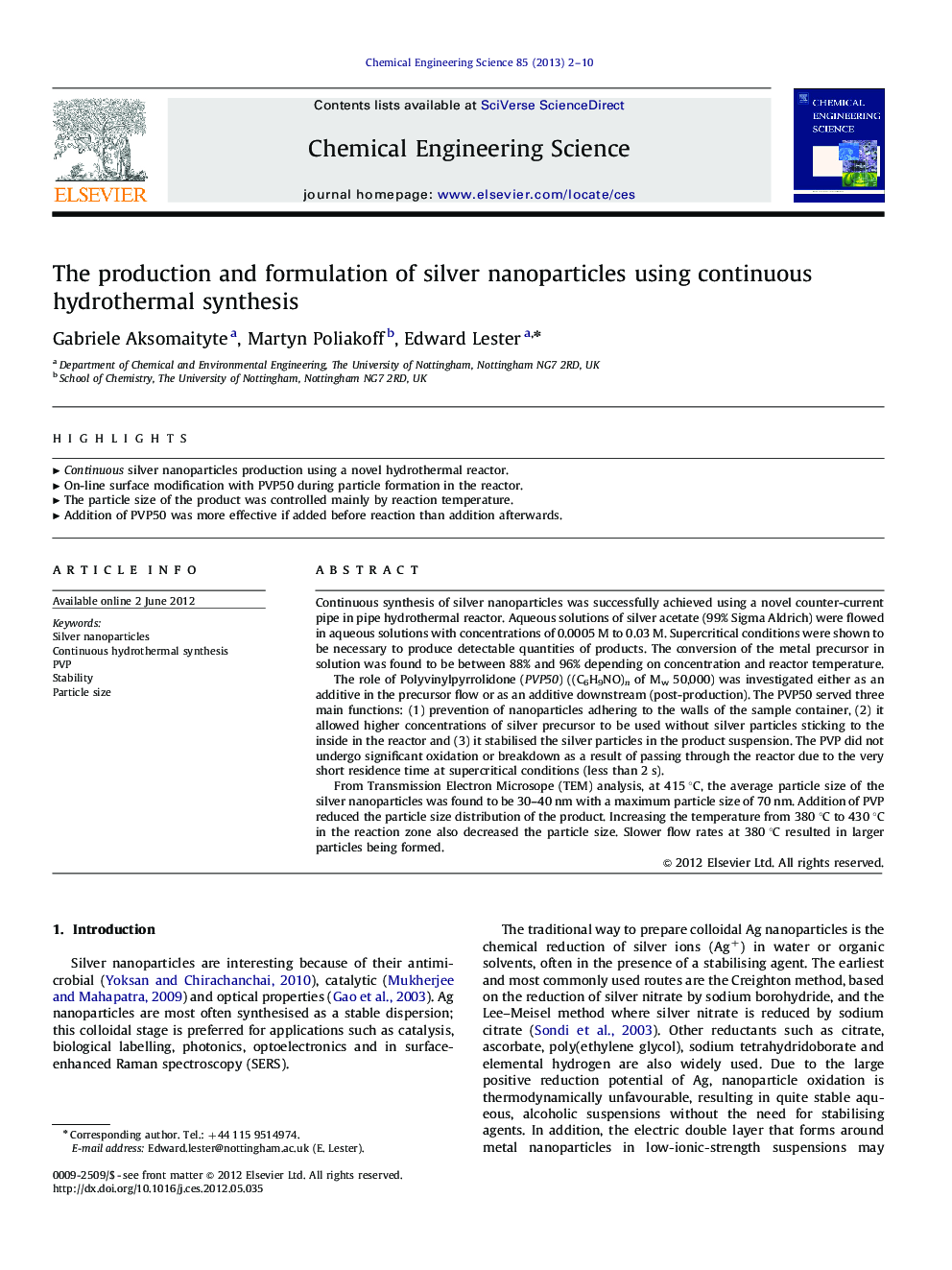| Article ID | Journal | Published Year | Pages | File Type |
|---|---|---|---|---|
| 155533 | Chemical Engineering Science | 2013 | 9 Pages |
Continuous synthesis of silver nanoparticles was successfully achieved using a novel counter-current pipe in pipe hydrothermal reactor. Aqueous solutions of silver acetate (99% Sigma Aldrich) were flowed in aqueous solutions with concentrations of 0.0005 M to 0.03 M. Supercritical conditions were shown to be necessary to produce detectable quantities of products. The conversion of the metal precursor in solution was found to be between 88% and 96% depending on concentration and reactor temperature.The role of Polyvinylpyrrolidone (PVP50) ((C6H9NO)n of Mw 50,000) was investigated either as an additive in the precursor flow or as an additive downstream (post-production). The PVP50 served three main functions: (1) prevention of nanoparticles adhering to the walls of the sample container, (2) it allowed higher concentrations of silver precursor to be used without silver particles sticking to the inside in the reactor and (3) it stabilised the silver particles in the product suspension. The PVP did not undergo significant oxidation or breakdown as a result of passing through the reactor due to the very short residence time at supercritical conditions (less than 2 s).From Transmission Electron Microsope (TEM) analysis, at 415 °C, the average particle size of the silver nanoparticles was found to be 30–40 nm with a maximum particle size of 70 nm. Addition of PVP reduced the particle size distribution of the product. Increasing the temperature from 380 °C to 430 °C in the reaction zone also decreased the particle size. Slower flow rates at 380 °C resulted in larger particles being formed.
► Continuous silver nanoparticles production using a novel hydrothermal reactor. ► On-line surface modification with PVP50 during particle formation in the reactor. ► The particle size of the product was controlled mainly by reaction temperature. ► Addition of PVP50 was more effective if added before reaction than addition afterwards.
